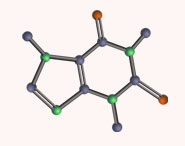


 علم الكيمياء
علم الكيمياء 
 الكيمياء التحليلية
الكيمياء التحليلية 
 الكيمياء الحياتية
الكيمياء الحياتية 
 الكيمياء العضوية
الكيمياء العضوية 
 الكيمياء الفيزيائية
الكيمياء الفيزيائية
 الكيمياء اللاعضوية
الكيمياء اللاعضوية 
 مواضيع اخرى في الكيمياء
مواضيع اخرى في الكيمياء
 الكيمياء الصناعية
الكيمياء الصناعية |
Read More
Date: 18-12-2020
Date: 17-12-2020
Date: 15-1-2017
|
Chemical Kinetics
So far we have studied equilibrium reactions. In these reactions, the rates of the two opposing reactions are equal and the concentrations of reactants or products do not change with lapse of time. But most chemical reactions are spontaneous reactions. These reactions occur from left to right till all the reactants are converted to products. A spontaneous reaction may be slow or it may be fast.
For example, the reactions between aqueous sodium chloride and silver nitrate are a fast reaction. The precipitate of AgCl is formed as fast as AgNO3 solution is added to NaCl solution. On the contrary, the rusting of iron is a slow reaction that occurs over the years.
The branch of Physical chemistry which deals with the rate of reactions is called Chemical Kinetics. The study of Chemical Kinetics includes :
(1) The rate of the reactions and rate laws.
(2) The factors as temperature, pressure, concentration and catalyst, that influence the rate of a reaction.
(3) The mechanism or the sequence of steps by which a reaction occurs.
The knowledge of the rate of reactions is very valuable to understand the chemical of reactions. It is also of great importance in selecting optimum conditions
for an industrial process so that it proceeds at a rate to give maximum yield.



|
|
|
|
التوتر والسرطان.. علماء يحذرون من "صلة خطيرة"
|
|
|
|
|
|
|
مرآة السيارة: مدى دقة عكسها للصورة الصحيحة
|
|
|
|
|
|
|
نحو شراكة وطنية متكاملة.. الأمين العام للعتبة الحسينية يبحث مع وكيل وزارة الخارجية آفاق التعاون المؤسسي
|
|
|